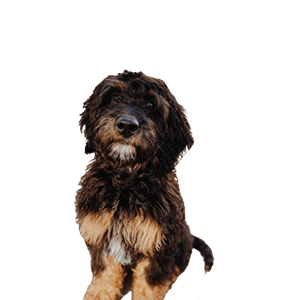Irish Water Spanie

“The Irish Water Spaniel is one of the oldest and most extraordinary spaniels. Dogs similar to them are depicted in manuscripts from 1,000 years ago. It is made of puppies known as Shannon Spaniels, Rat-Tail Spaniels, Whip-Tail Spaniels, or Irish Water Spaniels. In the 1100s, Continued references to the Irish Water Spaniel may be found from 1600. Around that time, the King of France has been gifted with an Irish Water Spaniel. Whether the breed was at one time located in distinctive varieties or whether or not numerous similar breeds had been its forebears is a matter of conjecture. What is agreed upon is that multiple similar spaniels existed in Ireland: Southern Irish, the Northern Irish, and Tweed Spaniels. The Southern Irish Spaniel, also known as McCarthy’s Breed, is credited with being the eventual major forebear of today’s puppies.
In the mid-1800s, the appearance of the prolific sire Boatswain so inspired the breed that he’s regularly recognized as the progenitor of the modern Irish Water Spaniel. The breed entered the show ring in both USA and Britain by the late 1800s. It turned into the 0.33 maximum famous carrying dog In 1875; despite its enchantingly clownish look and adept water-retrieving ability, the Irish Water Spaniel is now only rarely visible in the show ring or identified as the family pet.”
- Type - Sporting
- Weight -45-65 lb
- Height- 21-24"
- Family -Gundog, Spaniel
- Date of Orgin-1800s
- Area of Orgin -Ireland
Energy Level
Exercise Requirements
Playfulness
Affection Level
Friendliness To Dogs
Friendliness To Other Pets
Friendliness To Strangers
Watchfulness
Ease of Training
Grooming Requirements
Heat Sensitivity
Vocality
Temperement
The Irish Water Spaniel goes at everything in life with pleasure and zeal. This canine likes to swim, run, hike, and play and desires plenty of exercise or training. A clown at heart can be independent and has to be trained with patience, firmness, and a sense of humor. The Irish Water Spaniel has a tendency to be reserved with strangers and is occasionally timid; however, it is typically good with children.
Upkeep
This active, athletic, inquisitive breed desires lots of mental and physical exertion to prevent from turning frustrated or bored. An hour of free-running or strenuous playing a day is vital to fulfilling those requirements. Obedience work also can be beneficial in supplying the intellectual challenges this canine enjoys. The curly coat requires brushing and combing a few times a week, plus scissoring every few months. Like most dogs, this breed loses its coat periodically; however, the hairs usually become trapped in the other hairs instead of falling off on their own. If not combed out, they may form mats and cords, so this breed does require attention to grooming.
Health
“Major diagnosis: CHD, otitis externa
Minor diagnosis: distichiasis
Occasionally seen: megaesophagus, elbow dysplasia, hypothyroidism, seizures, nail-bed disease
Suggested tests: hip, elbow, eye, thyroid
Life span: 10–12 years
Note: May have adverse reactions to sulfa drugs or ivermectin”
Disclaimer
Note: While the characteristics mentioned here may frequently represent this breed, dogs are individuals whose personalities and appearances will vary. Please consult the adoption organization for details on a specific pet.
